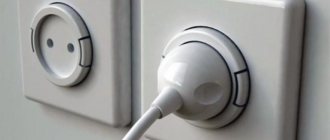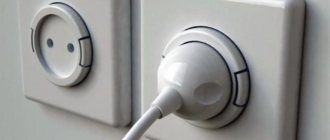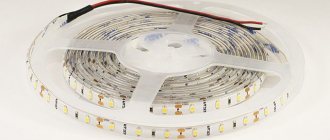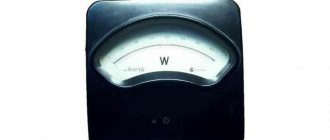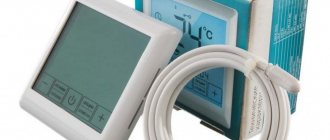Every year the cost of electrical energy becomes more and more, and this in turn forces users to think about controlling its consumption and saving. The consumption rate and cost of electricity differs depending on the purpose of the household, territorial and climatic features, availability of energy resources and other factors. Knowing the price and the number of kilowatt-hours generated, you can understand the final amount the user will pay. If the price per kWh is a fixed value, then consumption is a calculated value.
Electricity metering
An electric meter is a special device for metering alternating current electricity. There are such meters in every home, and they count not kilowatts or amperes, but kilowatt-hours. So, a kilowatt-hour is a non-system unit of measurement that demonstrates how much power in kilowatts an electrical appliance consumes in 1 hour of operation. It is for the kilowatt-hours that the meter registers that we pay the electricity producer. We can independently estimate the average daily electricity consumption in order to plan our spending on utilities.
How are electricity bills calculated?
The amount payable is calculated in one of the following ways:
- Based on the meter readings you provided; Provided that the meter readings were transmitted in the period from the 15th to the 26th inclusive
- Based on meter readings taken by employees of Mosenergosbyt PJSC; Control readings are taken by an employee of Mosenergosbyt PJSC 2 times a year.
- If there are no readings in the billing period, the amount payable is calculated based on the average monthly consumption volume;
- In the absence of information on the average monthly consumption volume, the calculation is made based on the consumption standard.
Power consumption calculation
All household appliances have a special nameplate or sticker indicating the main electrical parameters. Most often, the maximum power that the device consumes at peak loads is indicated. Since gadgets and devices operate at maximum only a small part of the time, you can safely reduce the average power of the device by 25%. Let the following electrical appliances be present in the apartment:
- Refrigerator – 500 W;
- TV – 200 W;
- Laptop – 400 W;
- Washing machine – 2000 W;
- Microwave oven – 900 W.
This is the maximum level of power consumption from the electrical network. Moreover, if the TV as a whole has equal consumption, then the washing machine consumes different power depending on the washing mode. Knowing approximately how long each appliance runs each day or week, you can calculate kilowatt-hours. To do this, express the power in kilowatts and multiply by the average operating time:
- Refrigerator: 8 hours a day = 0.5 × 8 = 4 kW/h;
- TV: 2 hours a day = 0.2 × 2 = 0.4 kW/h;
- Laptop: 6 hours a day = 0.4 × 6 = 2.4 kW/h;
- Washing machine: 2 hours per week = 2 × 2 = 4 kW/h;
- Microwave: 10 minutes (0.16 hours) per day = 0.9 x 0.16 = 0.144 kWh.
For monthly consumption, it is enough to multiply each value by 28. The washing machine works 2 hours per week, not per day, so we multiply the power of the “washing machine” by 4. As a result, we get the total electricity consumption for the month:
4 × 28 + 0,4 × 28 + 2,4 × 28 + 4 × 4 + 0,144 × 28 = 210,43
Thus, 210.43 kW/h of electricity is consumed per week. Knowing the cost of one kW/h, it is easy to calculate how much it will cost to pay for electricity per month. However, do not forget about gadgets such as tablets, electronic cigarettes and mobile phones. They don't indicate how much power these devices consume, but it's easy to find out.
What methods of transmitting evidence are there?
You can submit your testimony in any way convenient for you:
- through the Personal Account of a private client on the website of PJSC Mosenergosbyt;
- by phone Contact: +7 (499) 550-9-550 via voice control service;
- on the Moscow government services portal.
- through terminals for receiving readings installed in the branches of PJSC Mosenergosbyt and Multifunctional centers for providing state and municipal services;
- when paying through Qiwi and Sberbank terminals (subject to payment being made between the 15th and 26th).
Determination of power by current consumption
How to determine the power consumption of a mobile device if its maximum power is not indicated on it? To do this, you need to know the voltage and current. The voltage of all electrical networks in the CIS is standard and is 220 V. However, chargers use a voltage of only 5 V.
The current consumed may vary. For mobile phones or tablets, 1 A chargers are usually used, and for electronic vapor generators (vape mods) - 2 A. It is known that it takes an average of 4 hours to fully charge a device. Thus, the mobile phone consumes:
5 × 1 × 4 = 20 Wh,
and an electronic steam generator:
5 × 2 × 4 = 40 Wh
Consequently, we additionally spend about 1 kW/h per month to charge mobile devices.
Our program uses a similar calculation algorithm to determine energy costs. In this article, we calculated energy consumption manually. The calculator calculates everything automatically. You only need to indicate the operating time per day/week/month and the power of the selected electrical appliances. After this, indicate the cost of one kWh in your region and click the “Calculate” button. The program will display a table of electricity consumption and its cost per day/week/month/year.
You can also calculate the cost of electricity based on the amount of energy you already know. To do this, select the “Consumption” option in the calculator menu and indicate energy consumption in kWh for 1 year. For example, if you have printouts from your electricity supplier for your consumption during the previous year, you can use this value to run our calculator.
How to use the Voice Control service?
When you contact the Contact Center by phone +7 (499) 550-9-550, you can independently, without waiting for an operator’s response, transfer meter readings or obtain the necessary information. To do this, in the voice menu after the question “Tell me what interests you?” you need to say your question.
You can read the instructions for operating the voice service on the website of PJSC Mosenergosbyt.
Attention!
The personal account number and meter readings must be given strictly in one digit. You can enter data using the telephone keys. To undergo automatic identification, we recommend linking your phone number to your Personal Account in the Client’s Personal Account.
How to take meter readings correctly?
Counters come in two designs:
- Induction devices are “old-fashioned” bulky devices with a rotating wheel.
- Static - or modern electric.
Many people still have induction ones, but the trend towards switching to electronic models is already clearly visible - they calculate more accurately, look better, and do not make noise.
When taking readings from an induction device, pay attention to the first 5 digits (some models have 4).
The last digit is usually placed slightly separately or highlighted in a different color, it rotates relatively quickly - it is usually not written on the receipt (for an even and simpler counting) - this is the reading after the “decimal point” in the decimal fraction.
It is better to take data on the same day of the month. In some regions of the country, it is customary to call the MES or RES on your own (on the appointed day) and report your readings. Otherwise, the organization makes calculations based on average consumption over the past months - this data will be reflected in the receipt.
How to take readings from an electronic meter, multi-tariff readings
The electronic device can calculate a single tariff, or can be configured to count for several tariffs (different tariffs are introduced for the purpose of saving - during the day they are a little more expensive than usual, and at night they are much cheaper).
The desired mode is selected in the device menu (modes are usually changed by repeatedly pressing the enter button):
- T1 – for single tariff.
- T2 – for separate payment of the grace period from 23:00 to 7:00 am.
- T3 – one standard tariff and two preferential ones.
When these modes (T1 and T2) are displayed alternately, the device will show different readings that have accumulated over the month at a given tariff.
The difference with previous readings is calculated for each tariff separately.
How to take readings from an electric meter when replacing it
Meters are replaced due to their obsolescence, when inaccurate readings are suspected, and for periodic testing in the laboratory. What to do with the readings if the old meter was dismantled and a new one was installed?
Before the old meter is removed, the readings from it are copied onto paper.
You will need to pay off the outstanding balance on the meter.
All other manipulations will be done by the controller.
He will seal the new meter, draw up documents for it and transfer them to the service organization.
Next time the receipt will come with a new number and readings of the installed meter.
By the way, many people are interested in whether it is possible to replace the electric meter yourself? Yes, it is possible, but you must first notify the RES (you can do it by phone). But the company controller must seal the meter.
Is your electricity meter working correctly? We check it ourselves at home
Any person, including those who have nothing to do with electricity and energy, can easily check whether a home meter correctly accounts for electricity consumption (consumption). To determine the correct operation of the electric meter and, accordingly, the charges in the bill for consumed electricity, it is not at all necessary to call a specialist. This can be done independently without dismantling the meter and without violating the integrity of the control seal.
In what cases may it be necessary to independently check the operation of the electricity meter?
- You use electrical appliances in the same way as usual, you did not purchase or connect new household appliances, but your electricity consumption has increased sharply.
- You began to use electrical appliances less and less often, began to save electricity, or you are at home less often (business trip, vacation, etc.), but your energy consumption has not become less.
- You don’t have (or don’t use) household appliances that consume a lot of electricity, but in your bills the electricity consumption goes through the roof, as if you had an oil heater or air conditioner on all day long.
The main possible causes of problems with electricity metering are:
- Self-propelled (spontaneous movement of the disk of an induction meter or flashing of the pulse indicator of modern meters without load).
- Failure of the meter to exceed its accuracy class (percentage of measurement error) or malfunction of the meter, affecting the correctness of electricity metering.
- Unauthorized connection of a third-party load to your electrical network.
During the Soviet era, all subscribers had induction electricity meters installed. Now such meters are practically not used and their place has been replaced by modern “electronic” metering devices with a mechanical reading (counting) device or with a display (LCD - liquid crystal indicator).
To check if the meter is self-propelled, we turn off the circuit breakers installed after the meter. Now there is no load and the meter should “stop” (the induction meter disk does not rotate, the pulse indicator of the electronic meter “freezes” in the state it was in when the machines were turned off). Watch the meter for a few minutes. If the disk of the induction meter rotates, albeit slowly, and the LED of the electronic meter blinks occasionally, then you need to call a representative of the sales company to remove the meter and subsequently repair your meter.
To check for an unauthorized connection of a third-party load to your network, you need to turn off all electrical equipment in the apartment (refrigerator, TV, etc.) and turn off the lights everywhere. Next, we approach the meter and look at its “reaction” (you need to do such actions several times at different times of the day). If the counter is standing (the indicator is not blinking), then everything is in order. If the meter pulse indicator is “actively” blinking, this indicates that a third-party load is connected to your electrical network. For example, it could be a “cunning” neighbor who decided to “hang” part of his electricity consumption on you. I often encountered such cases of unauthorized load connection in houses of the Soviet standard panel series 101 (P-101). In the panels of this series, the hole for installing sockets in neighboring apartments is through. And some “Kulibins” easily connected their outlet to the neighbor’s line and made full use of the free electricity from their neighbors. There have been similar connections to a neighbor’s network and directly to the electrical panel on the landing.
To check whether an electricity meter operates in its accuracy class (to determine the degree of measurement error), you need an incandescent light bulb, a stopwatch (or a watch with a second hand) and the information indicated on your meter.
We turn off all electrical appliances in the apartment. We screw an incandescent light bulb (for example, 95 Watt) into the lamp. We turn on only this light bulb, go to the meter and measure the time during which the LED pulse indicator will flash ten “blinks” (pulses). The time of one full pulse is the time when the LED lights up, goes out and lights up again. Then we look on the meter what number of pulses will give us the electricity consumption of 1 kilowatt-hour recorded by the meter (the same as 1000 watt-hour). In our case, this is the number 1600.
As a result of the measurement, let’s say, we got the time of 10 pulses - 238 seconds. Since there are 3600 seconds in an hour, to obtain the number of pulses at a given load per hour, it is necessary (3600/238) * 10 = 151 (we divide the number of seconds in an hour by the number of seconds of ten pulses and multiply by ten pulses). Those. in an hour we would have 151 impulses in an hour. Now we divide the calculated number of pulses by the number of pulses indicated on the meter and get the electricity consumption at a given load per hour. 151/1600=0.094 kWh or 94 Wh. The way it is. Electricity consumption from a 95 Watt light bulb for an hour should be approximately 95 Wh! There will of course be a small error. The data obtained indicates that our meter is in its accuracy class and calculates electricity consumption absolutely correctly! But if, after calculations, you receive a figure that is a multiple of what was expected, then this indicates that the meter needs to be sent for verification and subsequent repairs.
It is clear that you will have your own initial data for calculation (power of the light bulb, time of ten pulses, number of meter pulses per kilowatt-hour). But it’s quite simple to perform a few mathematical steps to make sure that your meter counts correctly! And if the meter counts correctly, then you only pay for the electricity actually consumed!
Table 2. Demand factors (according to standards)
| Declared power, kW │up to 14│ 20 │ 30 │ 40 │ 50 │ 60 │ 70 and more│ |
| Demand coefficient │ 0.8 │ 0.65 │ 0.6 │ 0.55 │ 0.5 │ 0.48 │ 0.45 │ |
In order to independently calculate the approximate power consumption, you need to select from the list of consumers that are planned for use and sum them up (after multiplying each item by the number of consumers of the same type). Next, you need to multiply the resulting amount by the simultaneous use coefficient, which depends on the power consumption (Table No. 2).
Example: if the sum of your consumers is 32.8 kW, then according to table No. 1 the demand coefficient will be equal to 0.6. Multiplying 32.8 kW by 0.6, we get an approximate value of power consumption (per house) of 19.68 kW.
You can later use the resulting estimate of the power consumption of your home to adjust the value of the purchased power, or your needs, if the allocated power is less than the obtained value.
Closer to the point: how is the calculation made?
Placing an order for an electrification project for a house or apartment allows the property owner to get an approximate idea of the power consumption. However, it is often useful to inform yourself in advance about the estimated power consumption figure. A preliminary presentation makes it possible to achieve certainty regarding the amount of purchased power and makes it possible not to overpay personal funds for unconsumable energy. In the context of rising electricity prices, the issue of saving and the appropriateness of energy consumption in the house becomes relevant, which is why practical owners want to inquire in advance about such issues. Sometimes it is more profitable than paying for extra kilowatts (measuring the power of electricity, kW) to abandon some energy consumers, household electrical appliances.
The basis for calculating the total power consumption of electricity for a private home, which is carried out at the design stage of the electrification system, is the load of final consumers of electricity. It is worth noting that data regarding the approximate figures for electricity consumption by power equipment and household electrical appliances will allow those interested to conduct an independent assessment of energy consumption at home.
In order to calculate the power yourself, you will need the ability to use the table, as well as basic knowledge of physics from the school course. The data presented within the table is based on practical experience in the design of water supply systems, as well as lighting of private houses. Despite the indicative nature of the data, the values in the table regarding power consumption can accurately reflect real indicators, since they are taken from technical data sheets for special equipment.
The table shows the names of the most common household electrical appliances and electricity consumers, including fluorescent, incandescent, halogen, LED, electric stove, refrigerator, socket, dishwasher, hood (kitchen), electric kettle, convection oven, coffee machine, oven, washing machine machine, electric boiler, etc. With the increase in the number of electrical appliances, the question of saving power consumption becomes more and more important! For each energy consumer, household electrical appliance, an approximate indicator of the power that it consumes during operation is given, as well as the mains voltage parameters (single-phase AC network - 220V, three-phase - 380V).
In addition to the data given in the table for the approximate calculation of power consumption of a private home, the calculation will require those interested to use the demand coefficient, the value of which is determined through regulatory documentation. To make the calculation yourself, you will need to make a choice from the presented list of consumers planned for use, and then summarize the data. The next step is to multiply the resulting amount by the simultaneous use factor, which depends on the power consumption.
For example, it is worth saying the following: when receiving the sum of consumers equal to 32.8 kW, table No. 1 illustrates that the demand coefficient is 0.6. The product of 32.8 kW by a factor of 0.6 allows us to obtain an approximate indicator of the power that will be consumed by the house, that is, 19.68 kW. The estimate obtained as a result of such a power calculation can be used in the future to adjust the value of the purchased power of its consumers, if the allocated power has a smaller value than the obtained indicator.

